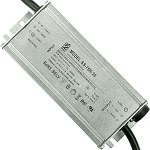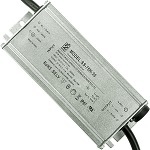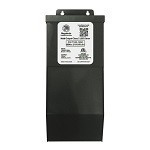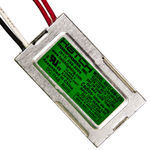LED Drivers
Why Do My LED Bulbs Need a Driver?
LED drivers, or LED power supplies, provide LED light bulbs with the electricity they require to function and perform at their best, much like a ballast does for a fluorescent lamp and a transformer does for low-voltage bulbs. Unlike most bulbs that operate on a higher voltage alternating current, LEDs run on low voltage direct current. Because of this, LEDs need drivers to convert that alternating current to direct current and to keep the voltage flowing through an LED circuit at the rated level that the LED requires.
When Do I Need an LED Driver?
Some LED light bulbs, like those designed to replace household bulbs, already contain an internal driver and don't require an external one. LEDs that typically require an external driver include tape light, cove lighting, LED panels and troffers, as well as some landscape lighting. Check the specifications sheet for your lights or fixture to see if it requires an external driver. Usually your LED will already come included with a driver as part of the assembly, or the spec sheet will specify what type of driver you need to purchase. You may also need to purchase a replacement LED driver when it looks like an LED fails before its rated lifetime. When an LED fixture or LED tube fails prematurely, it is often the fault of the driver. Even though there's no visual indication that it is the driver that's failing, replacing an LED driver can save you the hassle and cost of unnecessarily replacing perfectly good LED bulbs. Unfortunately, internal drivers cannot be replaced, so if your household LED dies early, you must purchase an entirely new bulb.
Signs You Need to Replace Your LED Driver
Since LED drivers often have shorter lifespans than the LED array or fixture it's paired with, you should check for signs the driver is failing before replacing the lights. Normally, a failed LED driver will just stop transmitting power, but a failing driver may just not regulate power the way it should. The two major signs your drivers are failing overdriving and underdriving. Overdriving is when the driver is sending more power through the LEDs than they can handle. This can cause overheating or premature failure of the LED array. Underdriving is the opposite. The driver is sending less power to the LED lights which causing decrease light quality and output. The efficiency of an LED driver suffers greatly from heat damage if the ambient temperature exceeds the maximum operating temperature the driver is rated for. So be sure to check what your driver can handle.
Types of LED Drivers
There are two main types of LED drivers: constant current and constant voltage. Each type is designed to operate LEDs with different electrical requirements. If you're replacing a driver, be sure to match the old driver's input and output requirements as closely as possible when choosing a replacement LED driver.
Constant Current LED Drivers
Constant current drivers are designed for LED lights that require a fixed output current and a ranged output voltages. This type of driver will have one specified output current labeled in amps and a range of voltages that will vary depending on the wattage rating of the LED. Using a higher amp rate will make the LED brighter; however, it will eventually over-drive the LED which results in reduced life-span and premature failure. Since constant current drivers maintain a consistent brightness, they are often used for signs, back-lighting, and commercial LED displays.
Constant Voltage LED Drivers
On the other hand, constant voltage drivers are designed for LEDs that require a fixed output voltage with a maximum output current. LED lights that operate with a constant voltage driver require a consistent amount of output voltage, typically 12V DC or 24V DC. This type of driver receives a standard voltage, around 120-277 Volts in the form of alternating current voltage (VAC) which the driver converts to a low direct current voltage (VDC). These drivers will maintain a constant voltage as long as the current stays below its maximum amperage rating. Constant voltage applications include under cabinet lights, under stair lighting, strip lights, and rope lights.
Our selection of LED drivers also includes AC LED drivers that are designed for LEDs that require an AC voltage input, programmable LED drivers, dimmable LED drivers, and drivers that are approved for outdoor use. When choosing the right LED driver for your application, verify whether it operates on constant current or constant voltage to avoid damaging your LEDs. If you have questions about what type of replacement LED driver you need, don't hesitate to contact our customer service team at 1-800-624-4488.





.jpg)
